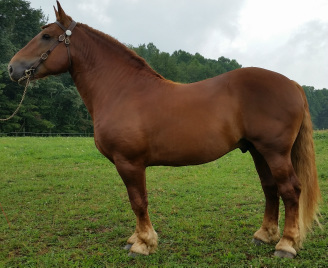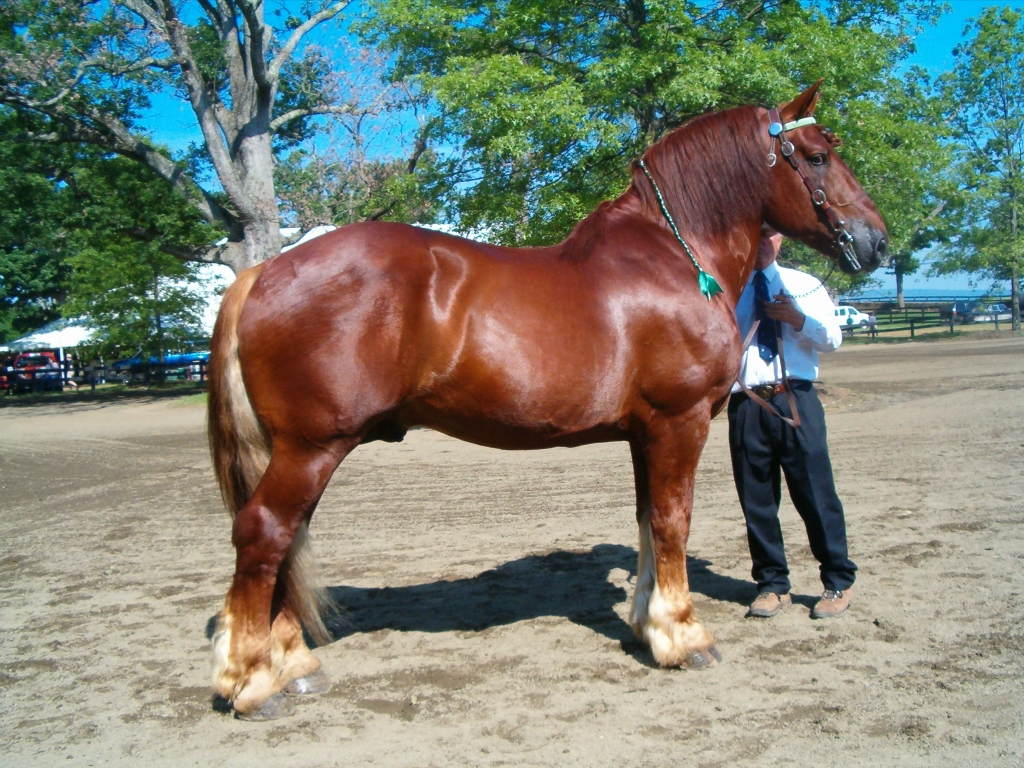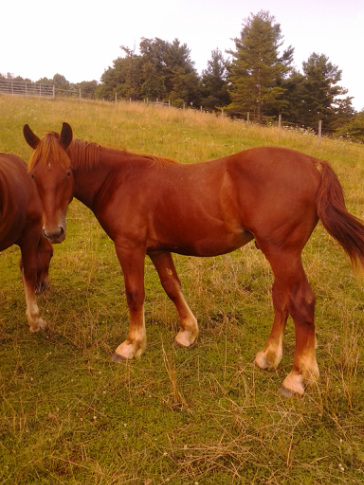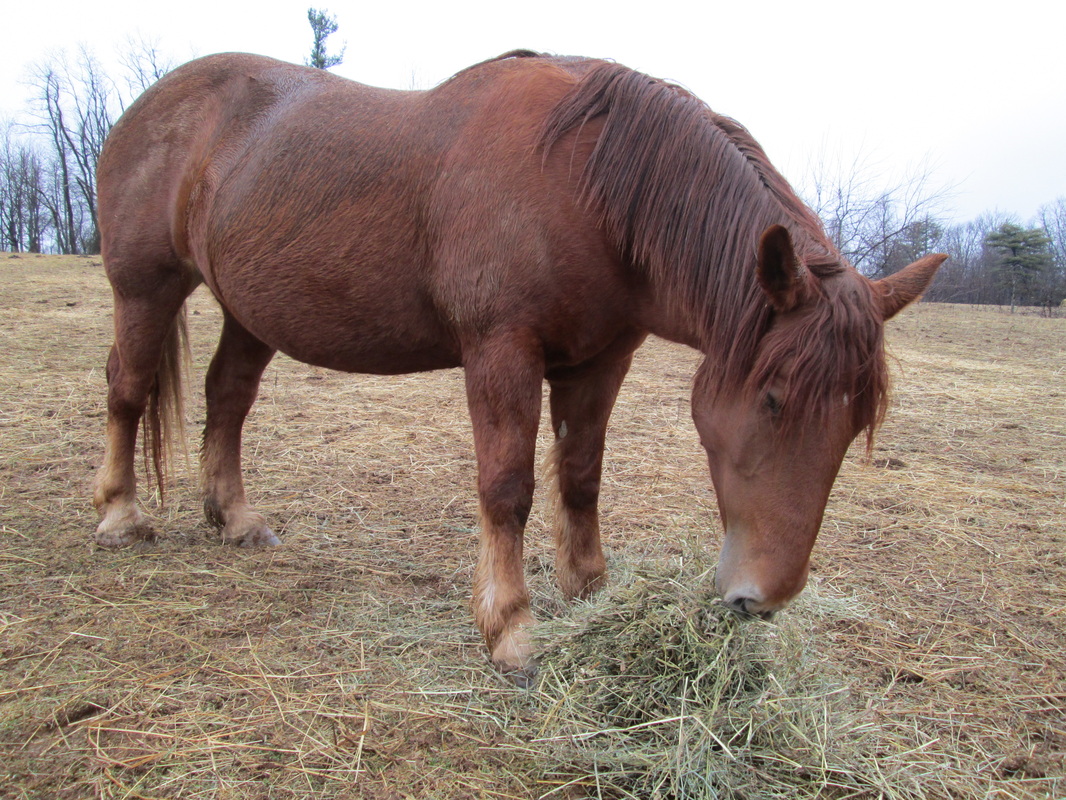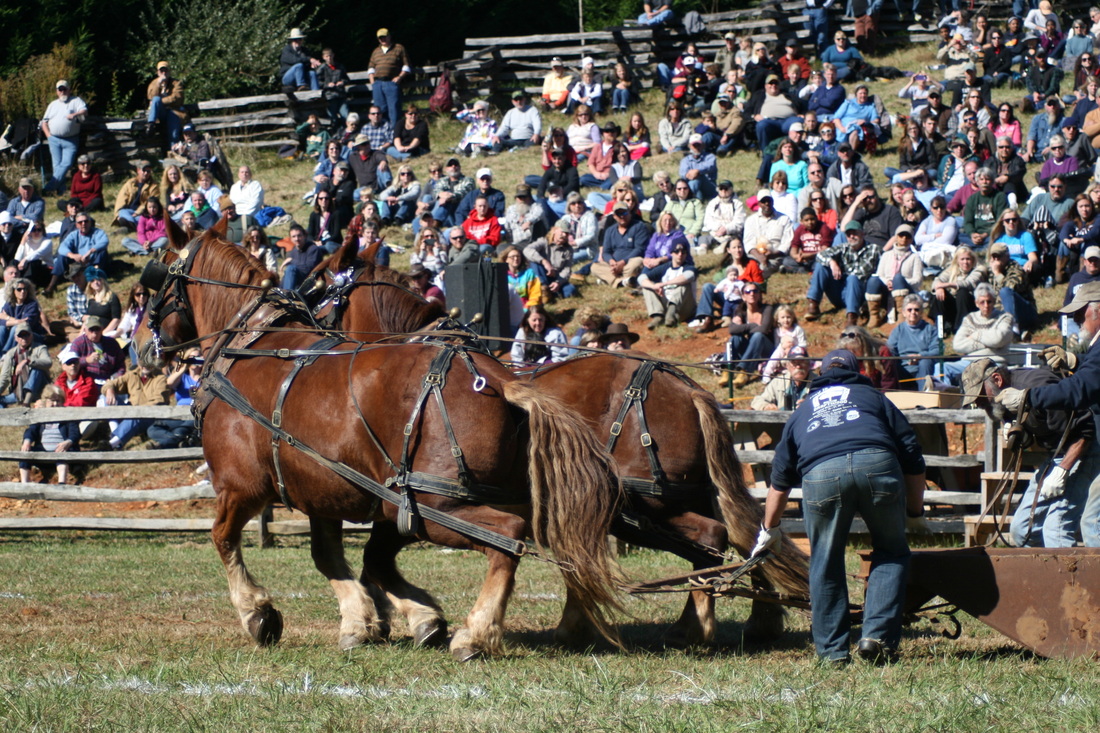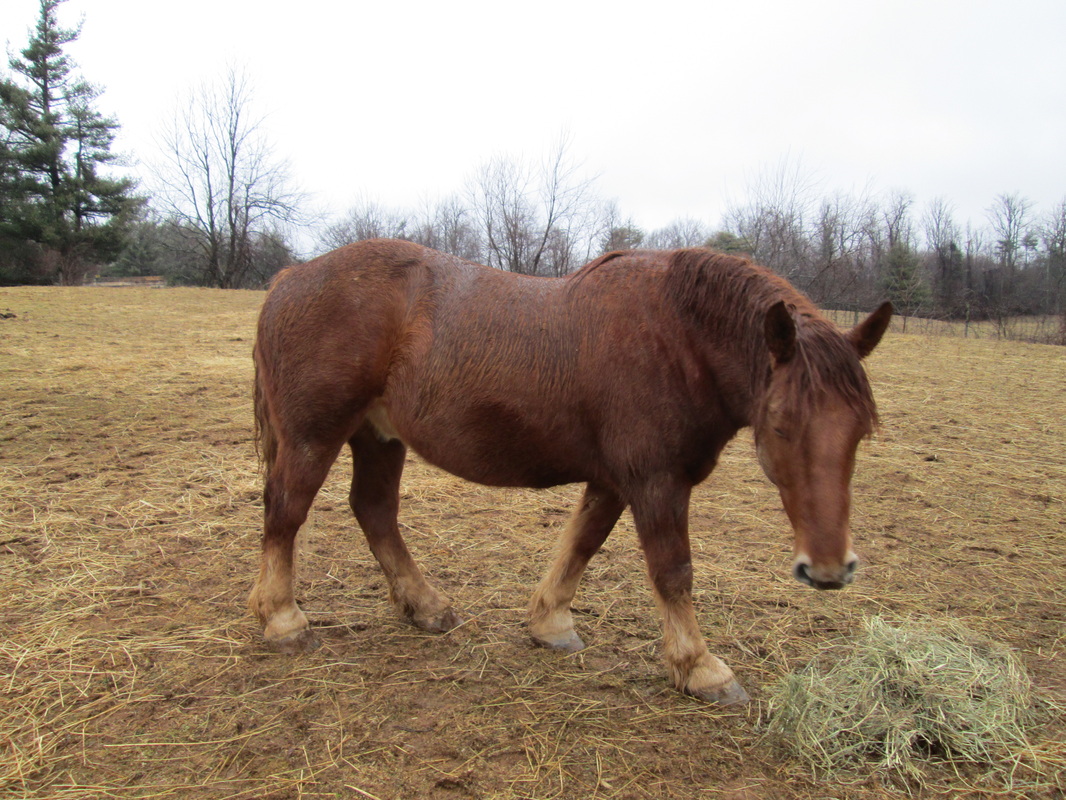|
|
Our world-class herd of registered Suffolks
Ridgewind Suffolk Farm is home to some of highest quality Suffolks Punch horses in North America. Our Suffolk Punch breeding program focuses on big horses that are willing, good natured, and have a lot of heart.
Generally we have 15 Suffolks on the farm. Here are a few of them:
|
Eyke Sovereign, Stallion #3396-SOur Stallion, imported from England is standing for breeding. We provide services via live cover only at this point.
Sire: Euston Bobby Dazzler Sire's Sire: Donhead Hall Navar Dam: Eyke Opal Eyke Sovereign ES 9035 3396-S
Click to set custom HTML
|
Welcome our new colt: Ridgewind Aethling Don, first foal by Eyke out of Ridgewind Rubescent Ent.
|

